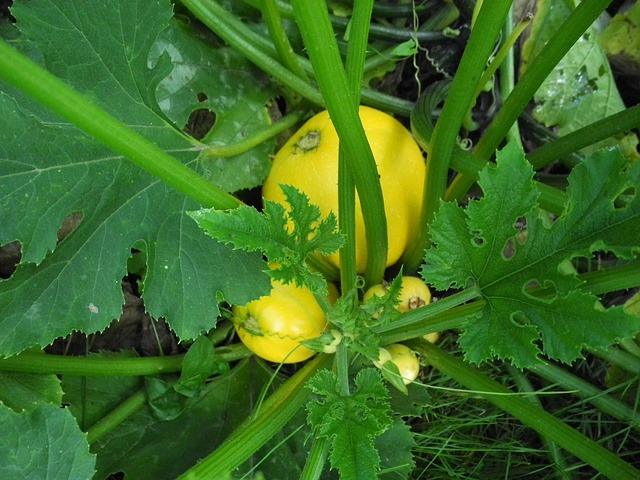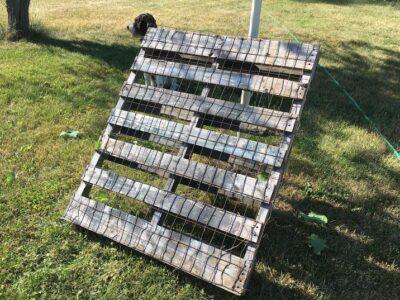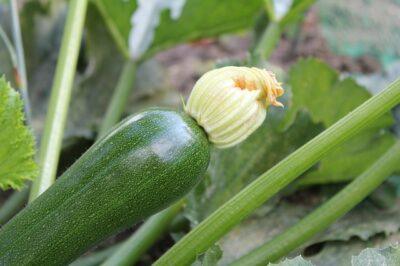One of my biggest concerns each year when I am dedicating space in my garden is where to put the vine plants (such as summer squash and zucchini). I don’t grow anything in super-huge amounts, as I don’t have an enormous space with which to work. My garden inventory is usually something like:
- a half dozen tomato plants
- twice as many assorted pepper plants
- a half dozen beans
- 3-4 kale plants
- some lettuce
- around 4 zucchini and summer squash plants
These last ones are the ones I generally enjoy the most, for their versatility in my summer meal plans. If I could, I would grow these in larger quantities. The trouble I run into is that the vine-based plants seem to become so invasive overnight!
The last thing I want to do is to waste the hard work I put in nurturing my other plants by allowing for my zucchini and summer squash to roam as they will. Here is how I made my garden more vine-friendly without having to limit the space available to each plant.
Get The Best Deals On Non-GMO Seeds Right Here!
One day while attempting to remove some fencing from behind my shed, I had a stroke of genius. Here I was fighting with some random vine that had come out of nowhere and had overwhelmed the fencing I had set against the shed the previous year. Without the fencing, the vine would have a very difficult time securing adequate footing on the bare shed wall. So why couldn’t my vine-based plants use the same method in my garden?
All I needed to do was design something that would be sturdy enough to support the weight of the plants and would have enough surface area to allow the plants to grow and their fruits to fully develop. Here is how I did it.
Materials I used:
- a wood pallet
- two pieces of scrap wood
- metal fencing material
- wire cutters
- staple gun
- cordless drill
- 2 ½-inch wood screws
Many times I will repurpose the wooden slats of a pallet and am left with just the square outline of the pallet and maybe one or two slats that I don’t dare remove due to their perceived damaged. In the past I took these frames and added them to the bonfire pile, but seeing a potential use, I rescued several of them from their potentially fiery demise.
The same fencing that I had to wrestle from the vines behind my shed became the very material I used to help my squash plants climb without fear. All I did was measure the size of the pallet and cut the metal fencing down to size. I found it a little helpful to have the fencing be a little long so it could stretch over the sides of the pallet. The wire cutters made this a quick process.
After that, I took the staple gun and used it to secure the fencing material to the frame of the pallet. Since I cut the fencing a little longer than I needed, it is easier to secure it to the frame since there was very little material on the face of the pallet for me to attach it to.
The next step was to attach two pieces of wood to the underside of the pallet frame in order to help it stand up. I used some scrap 2×2 wood that I happened to have laying around. I cut each piece so that it measured roughly 4 feet in length. I secured each piece as close to the top of the pallet as I could, using a couple of 2 ½-inch wood screws.
Seamazing: The Low-Cost Way To Re-mineralize Your Soil
I didn’t tighten the screws all the way at first, because I wasn’t sure exactly what angle I wanted the pallet to set at. This way I could adjust the legs of each pallet before finalizing them. I eventually decided to have the pallets sit at just under a rough 45-degree angle so that the plants had a good platform to grow and it wasn’t too steep for the fruit to mature.
I positioned the pallet as close to the zucchini as I could without crowding the plants. It took a little coaxing, but I was soon able to train the plants to grow up the pallet as opposed to around it. Soon enough, I had free space in my garden that wasn’t being overrun by the vines of these two plants.
One of the unintended results of installing this pallet platform in my garden was that I now also had a unique space where I had access to partial shade during the day. I used this area to plant additional lettuce in the hotter portion of the summer when my other crop was showing signs of damage due to the intense sun and heat.
All and all, this was a fun project that cost me absolutely nothing extra out of pocket. I happened to have all the needed materials on hand, and it only took me about an hour of time to figure out what I wanted to do and how I wanted it to look.
If I were to build another one of these (which I will be doing shortly), I would be slightly more careful in the edges I left behind on the fencing I attached to the pallet. Some of the remaining edges were sharper than I had expected, and I had to do some maintenance to remove them and ensure the safety of both myself and my family.
The results of this project were exactly what I wanted them to be. Once I have a few minutes of free time, I am going to build three more of these for this year’s garden so that I can have one dedicated for each of my vine plants. If your goal as a potential homesteader is to use what you have and to make the most out of your space, you should consider something like this to get the most out of what you have!
How do you keep your vine plants from taking over the garden? Share your tips in the section below:
Every Spring, Gardeners Make This Avoidable Mistake — But You Don’t Have To. Read More Here.
 Off The Grid News Better Ideas For Off The Grid Living
Off The Grid News Better Ideas For Off The Grid Living






